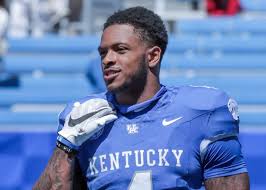For five consecutive evenings a few weeks ago, I watched as the New York Mets beat the Baltimore Orioles in the 1969 World Series once again. This was the first World Series the Mets had ever won, and although I saw the end of the last game at the time, I had never seen all the games. Yes, it would be a project. But why not. I’m home quarantined. I could use a little cheering up.
I do remember the Mets leaping around the infield joyfully after the fifth and final game, which I watched “live in living color”—color TV was just coming into common use in 1969—while sitting on a stool in the downstairs bar at the 1770 House in East Hampton. With the last out, we all jumped around, shouting, slapping backs, spilling drinks, whooping and carrying on.
Well, now I watched it over five days, in the middle of a pandemic on SNY on my five-foot-wide flat-screen TV.
This 1969 World Series cemented the nickname “Amazin’ Mets,” and they are still called that today. But they had been called that long before that World Series. The team had been founded seven years earlier as an expansion team in the National League and, as they were given cast-off players by the other teams, they kept on losing and losing until they lost a record 120 games to finish 10th. Yes, there were 10 teams in the National League back then. The record of 120 defeats has never been equaled.
Also unequaled was the fact that for the next six seasons, they continued to finish 10th five times, and fans started calling them the “Amazin’ Mets” for all the negative records they were setting. It was sarcasm.
The first two games, in Baltimore, were now replaying on my television in black-and-white, which made me think I was mistaken remembering I had watched the last game in color. But the last three games, which took place in New York, were in color, in some of the worst blurry footage imaginable, but color nevertheless—“living color,” as the NBC announcer Curt Gowdy said proudly. The reds were particularly vivid.
In the fifth and final game, a shimmering rainbow of a horizontal line spent five seconds slowly making its way from the top of the screen to the bottom at about 30-second intervals for the first two innings. Then it was gone.
“They probably whacked the side of the television camera with a fist,” I told my wife. “That’s how we fixed electronics back then.”
Surprisingly, the quality of play was about the same, then to now. Just fabulous. There was a towering home run in the last game by Baltimore Oriole Frank Robinson. There were diving catches all over the place, including three by Mets outfielders, one of which, by Tommy Agee in center field, cost the Orioles three runs that then led to their defeat in the fourth game.
There was a certain informality to the game then. Sweat would soak a pitcher’s cap brim. In the fifth game, a Baltimore player emerged from the dugout for his time at bat tucking his shirt into his pants, which he had neglected to do earlier.
And there were no helmets or any other safety gear like we see today for the batter, the catcher, or even the umps. Canvas covered the outfield walls. Hard on whoever ran into them, and several did.
At one point, Gowdy, said that 55,000 fans had paid $600,000 in total to be in attendance. That would be an average of $11 a ticket.












Leave a Reply